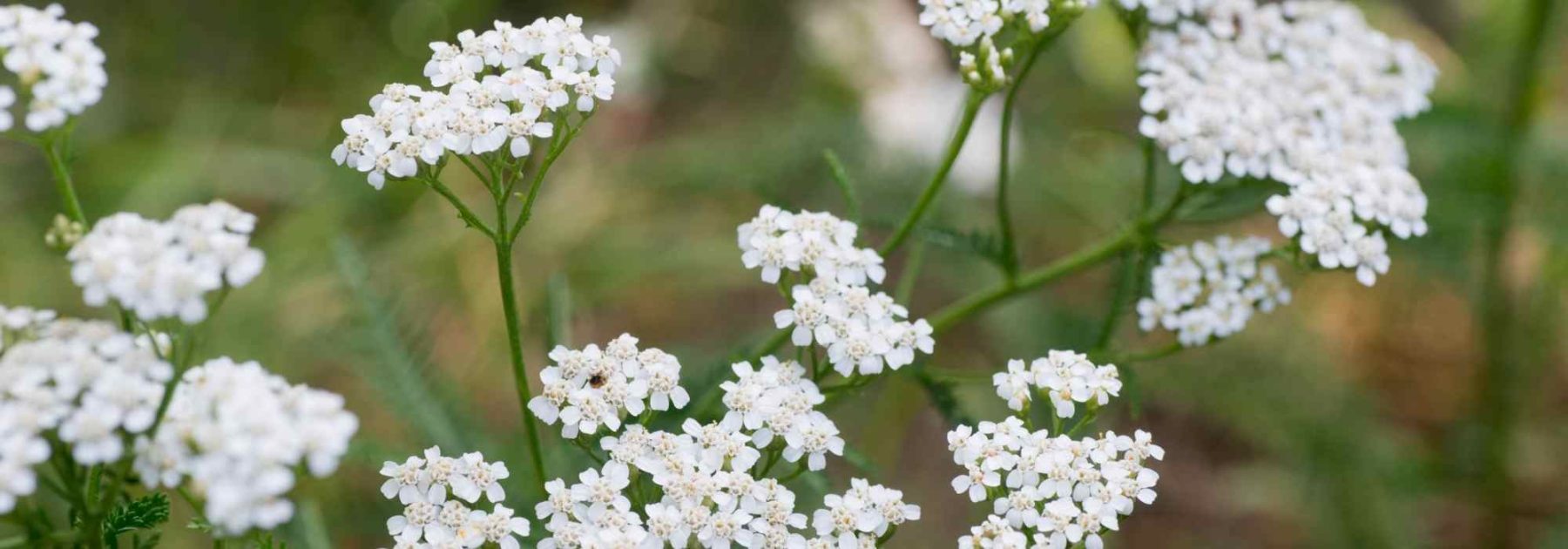
Yarrow: A Plant to Grow for Its Medicinal Properties
A hardy perennial with multiple benefits for health and the garden
Contents
Known since antiquity and still valuable today, yarrow (Achillea millefolium) is a hardy perennial herbaceous plant from the Asteraceae family. Renowned for its melliferous properties, there is every reason to plant it in the garden to support biodiversity. Especially as it proves to be very hardy, undemanding and low-maintenance. Yarrow grows naturally in meadows, pastures and along paths, but easily finds its place in dry borders, edges and rockeries. But did you know that this plant, with its feathery foliage and long-lasting flowering heads, is also valued for its medicinal properties?
Its prolonged summer flowering, ease of cultivation and aromatic qualities make it a must-have for gardeners keen on herbal remedies. But to truly benefit from yarrow, one must first understand its botany, multiple uses and necessary precautions.
To learn more: Yarrow, Achillea: planting, growing and care
Introduction to Yarrow (Achillea millefolium)
Yarrow is a rhizomatous perennial plant, forming dense clumps 30 to 80 cm tall depending on the variety and growing conditions. Its running rootstock gives rise to very leafy, single stems, often woolly. Yarrow can be recognised by its finely divided, greyish-green leaves, which are highly aromatic when crushed. Woolly in its youth, then villous and almost glabrous, this foliage is divided into small lanceolate tips, curved at the ends. Deeply cut, almost feathery, this foliage inspired its name “millefeuille” (thousand-leaf), while the genus name refers to the Greek hero Achilles, who, according to legend, used it to heal his soldiers’ wounds. Hence its name “herbe aux militaires” (soldier’s herb).
But this plant is also known by other vernacular names, each with a particular meaning, usually medicinal: herbe aux coupures (wound herb), herbe aux charpentiers (carpenter’s herb), saigne-nez (nosebleed), herbe aux cochers (coachman’s herb), herbe aux dindes (turkey herb), herbe de la Saint-Jean (St. John’s herb)…
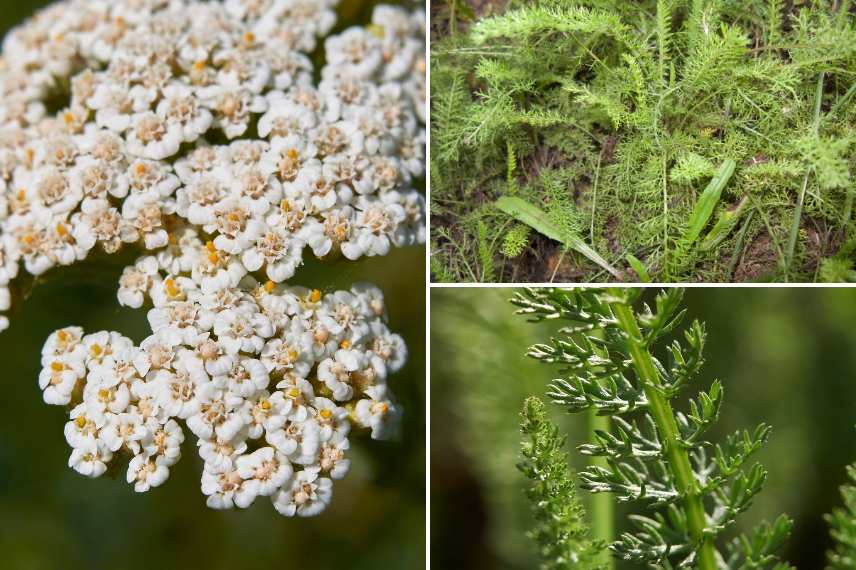
Yarrow is a plant from the Asteraceae family
Yarrow is also distinguished by its flowering. The stems end in rich corymbose panicles, composed of fine heads. The flowers are regular and tubular, dirty white to yellowish, sometimes slightly pinkish, for the type species. But there is a multitude of horticultural species with very varied flower colours, from pastel to very warm. These inflorescences are melliferous and extremely attractive to pollinators, particularly hoverflies, bees and certain butterflies. Yarrow flowers from June to September, depending on the region and exposure.
Tolerant of drought once established, it prefers well-drained soils and sunny locations, but also adapts to poor or chalky soils. Its spreading, rhizomatous habit can make it invasive in loose soil, but this vigour is valuable for covering a slope, a tree base or stabilising soil.
Read also
Growing Yarrow in a Pot: Our TipsHow to use yarrow?
The various parts of yarrow, used in phytotherapy, namely the flowering tops, leaves and stems, contain numerous bioactive compounds:
- The essential oils it contains, including camphor and azulene, are known for their antiseptic, anti-inflammatory and mildly analgesic properties. Camphor locally stimulates circulation, while azulene, a blue pigment derived from the distillation of certain aromatic molecules, has soothing and reparative effects on inflamed or damaged tissues
- Flavonoids, powerful antioxidants, contribute to hormonal regulation, support the vascular system and help combat oxidative stress
- Tannic acids exert an astringent action that tightens tissues and slows minor bleeding, justifying yarrow’s traditional use on superficial wounds
- Salicylic acid, a natural precursor to aspirin, gives the plant mild antipyretic and analgesic properties, useful for fever or diffuse pains
- Sesquiterpene lactones, although present in small quantities, play a significant role in the plant’s anti-inflammatory and immunomodulatory effects, particularly on digestive mucous membranes and menstrual disorders.
For medicinal use, fresh inflorescences are used, harvested from June to September, or dried in bunches in the shade, in a well-ventilated area. The leaves are also useful. They are harvested in May and early June, before flowering. Drying takes place in the shade, but the leaves can also be used fresh. The stems are also used in dried or fresh preparations.
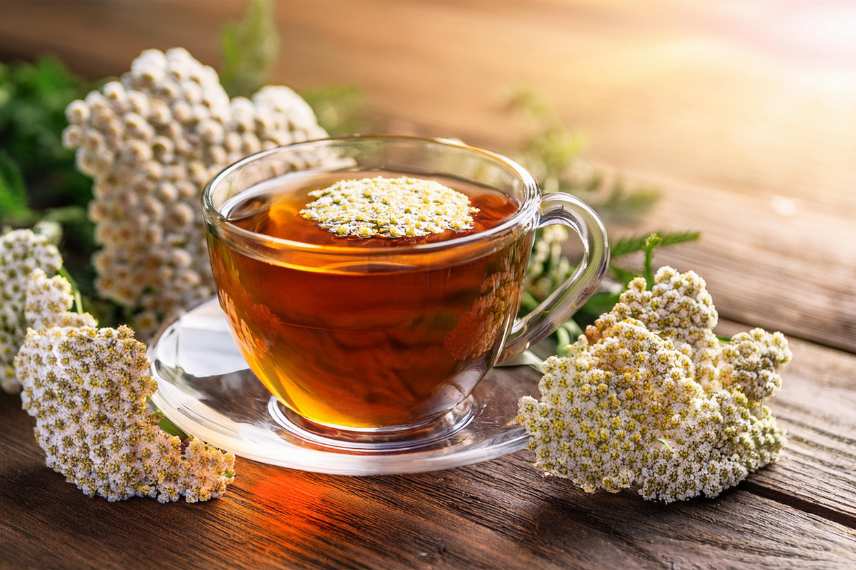
Yarrow flowers and leaves are prepared as an infusion
Yarrow can be used in different forms:
- As an infusion: one to two teaspoons of dried plant (1 to 2 g) per 150 ml cup of simmering water. Steep covered for 10 minutes then strain. Consume 1 to 4 cups per day
- For external use, as a decoction: boil 10 to 20 g of dried plant per litre of water, simmer for 5 minutes, then steep for 10 minutes off the heat. Once cooled, the decoction can be applied with a sterile soaked compress to the affected area for one hour, three times daily
- As an infused oil: Place dried flowering tops in a sterilised jar, completely covered with a stable vegetable oil (such as olive or calendula oil), then leave to macerate in sunlight for three weeks. The oil is then filtered and stored away from light
- In emergencies, fresh leaves can simply be crushed to release their juice and applied directly to small cuts or stings.
What are the benefits of yarrow (Achillea millefolium) for the body? (Note: The botanical name "Achillea millefolium" remains unchanged, while the common name "achillée millefeuille" is translated as "yarrow," following standard horticultural terminology in British English.)
Yarrow is renowned for its multiple benefits on well-being and health, thanks to its broad spectrum of therapeutic actions:
Antispasmodic and Digestive
Yarrow soothes involuntary contractions of smooth muscles, relieving intestinal spasms, digestive colic, or pain related to irritable bowel syndrome.
Its choleretic action stimulates bile production, facilitating fat digestion and preventing post-meal heaviness. This property is particularly useful during periods of slow digestion or functional liver disorders.
Menstrual Cycle Regulation
Yarrow is also known for its effects regulating the menstrual cycle. It is classified among emmenagogue plants: it promotes balanced menstrual flow, soothes uterine pain, and supports women with irregular or heavy periods. This gentle regulation, linked to flavonoids with mildly oestrogenic effects, also helps relieve certain premenopausal discomforts, such as hot flushes or cyclical headaches.
Tonic Effect on Blood Circulation
It improves venous return, alleviates heavy legs, and reduces the formation of small superficial varicose veins. Its tannic acid and lactones also give it haemostatic properties, valuable for attenuating minor bleeding (cuts, nosebleeds, heavy periods).
Healing Properties
For external use, yarrow promotes the healing of superficial wounds, scrapes, cracks, or insect bites thanks to a combination of antiseptic, astringent, and anti-inflammatory effects. This ability to soothe mucous membranes and close damaged tissues is well-documented and valued in field herbalism.
Anti-inflammatory Benefits
Azulene, one of its most active components, has powerful anti-inflammatory properties, often compared to those of German chamomile. Its action is particularly beneficial for low-grade inflammatory conditions affecting the skin, mucous membranes, and certain joint areas. It can thus be incorporated into creams or balms to relieve minor arthritic or tendon pain, especially when linked to chronic inflammation.
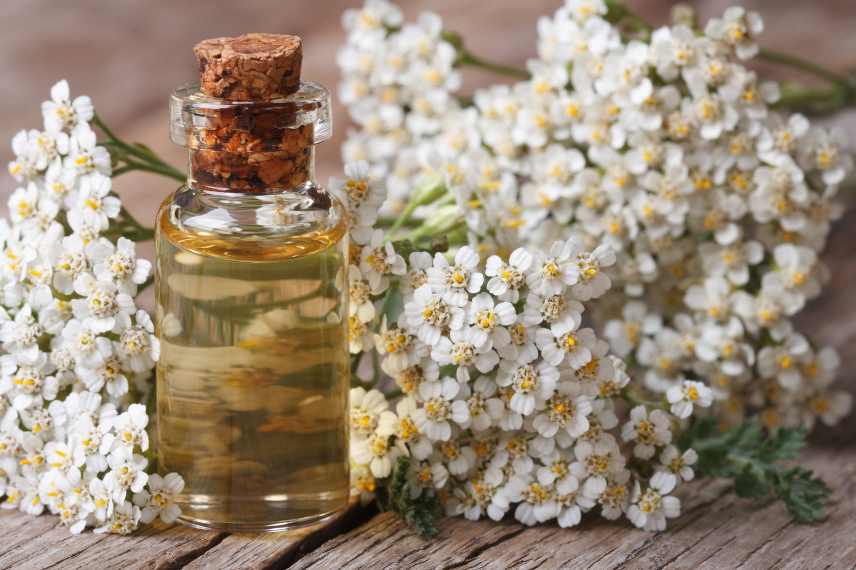
Yarrow infused oil for wounds and bruises
What are the secondary effects and contraindications of yarrow?
Like any potent plant with proven benefits, yarrow is not without precautions regarding its use. Especially since it is rich in essential oils and active compounds. It should therefore be used judiciously. Moreover, it is always advisable to seek expert advice from a specialist or doctor before consuming yarrow internally or externally, particularly during long-term treatment.
- As yarrow is a plant from the Asteraceae family, it may potentially cause allergies, manifesting as contact dermatitis, skin rashes, or digestive issues
- Its use is not recommended for pregnant or breastfeeding women, as certain components may have a uterine effect or pass into breast milk
- It may interact with certain anticoagulant or antihypertensive treatments, due to its circulatory properties.
- Subscribe!
- Contents
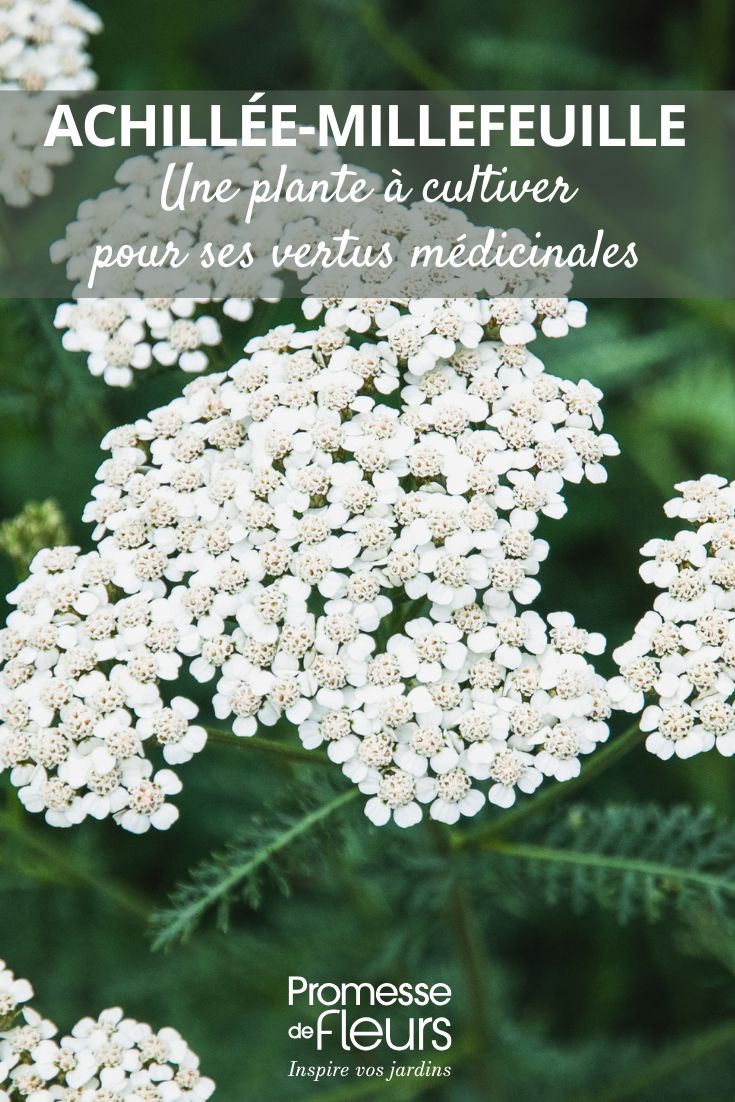




































Comments